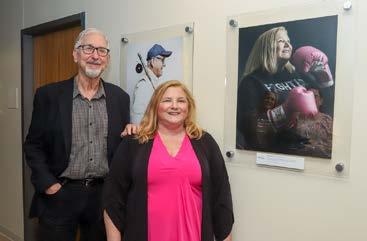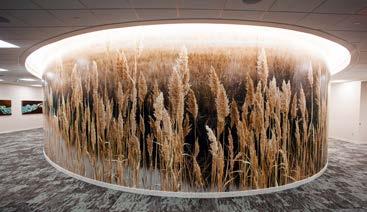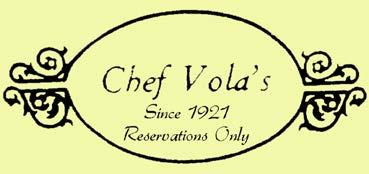
6 minute read
Lifestyle Art
ART IS THE PRESCRIPTION
Sunrise over the Howard S. Stainton Memorial Causeway, also known as Ocean City's Ninth Street Bridge. Photo by Kristian Gonyea
Advertisement
Proving hope and comfort during uncertain times, art has come to nurture our souls.
By Michael Cagno
Caring Hands, an exhibit that celebrates the nurses of the AtlantiCare Healing Arts Program. Photos by (left to right) Paul Dempsey, Donna Connor and Nastassia Davis
The past few months have been a challenge for all physically, emotionally, socially, and economically. Tragic stories from around the world have been embedded into our conscience. Though many answers are needed, the big questions seep into our minds. What really matters? How can I find happiness? Why is this happening?
The arts play a critical role in addressing these questions. In early March 2020 when Northern Italy was placed on lockdown, instead of demonstrations, looting and feelings of helplessness, it was the power of the arts that provided inspiration. Opera singer, Maurizio Marchini, took to his balcony to sing, his voice filling Florence’s empty streets with life once again as he gave his own rendition of Giacomo Puccini’s famous aria Nessun Dorma.
In Columbus, Ohio cello-playing siblings Taran Tien age 9 and his 6-year-old sister, Calliope, played a concert on the porch of an elderly neighbor, who had been isolating herself amid the coronavirus outbreak. Museums and galleries from around the globe are taking advantage of technology to provide virtual exhibitions, podcasts, and art classes. Throughout recorded history, the arts have provided the “medicine” to uplift the spirits since they are fundamental to humanity and an invaluable component of a healthy community. On the front lines of the Covid-19 have been the extraordinary healthcare providers. These amazing caregivers are putting their lives at risk to provide the treatment necessary for healing. The environments in which these angels save lives have gone through a transformation over the past decade. No longer are these institutions rendered with white walls, floors, and gowns.
The arts have embedded itself into the architectural design of healthcare facilities along with purposing commission paintings, murals, and sculpture. The approach towards human-
Bill Horin of ArtC photographed survivor Dorene Sellarole (shown together) for the AtlantiCare Healing Arts Program exhibit “Where Hope Grows”


Located at the AtlantiCare Health Park Manahawkin, Janet Greco’s photograph Cedar Dock Run Road graces the walls of the waiting area. Photo by Bill Horin
Artwork created by Pixel Parlor of Philadelphia covers the walls of the ARMC, Stanley M. Grossman Pediatric Center — Atlantic City Campus. Photo by Bill Horin

DAYS of OLDE ANTIQUES & COLLECTIBLES
NEW LOCATION! NOW OPEN!

Visit our new 21,000 square foot facility! It’s bigger & better! New Dealers Welcome! Come on over & check it out! 150 S. New York Road (Route 9), Galloway, NJ Less than a 1/2 mile south of our old location 609.652.7011 • DaysofOldeAntiques.com Jersey Shore’s Largest Co-Op • Open 7 Days a Week • 10am-6pm

istic care benefits not only the patients but the caregivers and family members. Over the years there has been sound research literature on these benefits such as decreasing anxiety and blood pressure, increasing quality of life, and shortening the length of stay.
Dr. Wilma Bulkin Siegel, a pioneer in the hospice movement and award-winning artist, states, “We are human because of our brain, our hand, and our heart. Only the human being can express inspiration and emotion by combining all three and, thus, produce the expression of the human condition in writing, poetry, music, dance, visual art, and design, and theatrical art, both stage and screen — all a creative expression of the heart and soul. The arts can be used to heal both clinically as preventive medicines in mental health and for those suffering physically from illness. Furthermore, the arts can be used in professional education to teach young medical students the humanistic approach. In so doing, the arts can demonstrate the fact that we become a mirror image of who we treat. The healthcare provider will someday become the recipient of the care as a patient and thus should always be treating the patient as they wish themselves to be treated.”
Leading this charge in Southern New Jersey is AtlantiCare Healing Arts Program. Cheryl Broschard, Development & Cultural Project Coordinator, explains AtlantiCare recognizes it takes more than medicine to build a healthy community. Healing Arts is a unique initiative, designed to showcase original artwork by artists of New Jersey. Paintings brighten hospital corridors. Photography accents a medical office lobby. Sculpture brings a landscaped courtyard to life. Art in the healthcare setting is helping to make AtlantiCare’s public spaces more appealing. By integrating the arts, we visibly demonstrate our intent to create a healing presence in our community.
AtlantiCare has made a commit
ment to dedicate one percent of construction costs to public artwork. Much of the art was commissioned from New Jersey artists. It is one of the most ambitious projects in public art in the state. It provides opportunities to discover the arts to thousands. Healing Arts also includes special events and art exhibitions. The program brings the arts front and center, enhancing AtlantiCare’s mission to build a healthier community.
“Bra-vo,” a recent Healing Arts project art exhibit showcased the artwork of breast cancer survivors who came together to create works of art inspired by their experiences with cancer. Lead by Sweetwater artist, Kathy English, artists were encouraged to explore their experiences with cancer and give them hope. Kathy helped each woman convey her specific hardships, worries, triumphs, and emotions through sculpture. They used bras as canvases. From candy pieces and candy wrappers to a field hockey stick; from sequins to seashells; and from faux flowers to old car parts, our artists found expression for their cancer stories — stories of success and fear; of resilience and hope; of pain and of survival.
I’m a five-year survivor of breast cancer,” says artist and AtlantiCare employee Kim Turner. Her exhibit, “Hakuna My Ta-Tas,” plays on the idea of “Hukuna Matata” — no worries — and pays homage to her support team — friends and family members who supported her through her diagnosis and treatment. “Every day is a new day and every day is a good day,” she says. “It was wonderful for me to be able to sit down and put my thoughts into crafts — to build a bra based on what I’d been through.”
Without question, the arts will continue to be a catalyst for healing. As the road to recovery begins physically, emotionally, socially, and economically, the arts bring hope and nourishment to our souls. The musicians, singers, and artists of all mediums who shared their talents during this time of crisis have been just what the doctor prescribed! n
DON’T FACE CANCER ALONE. Become a Gilda’s Club Member.


CANCER DOES NOT DISCRIMINATE.

Gilda’s Club South Jersey is a free, cancer support community for anyone who is touched by cancer in any way — men, women, teens and children who are living with cancer, their families and friends, and those who have lost a loved one to cancer.

Visit gildasclubsouthjersey.org or call 609-926-2699 to learn more.










